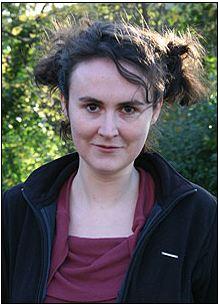Seminar 4th May 2010 4 p.m. 53/4025
Systems Aikido: A Novel Approach to Managing Natural Systems
Dr Alex Penn
University of Southampton
- Categories
- Complex Systems
- Submitter
- Nicki Lewin
Refreshments available from 3.30pm
The potential of new technologies which emulate or exploit the unique properties of living systems is widely lauded. Such technologies however, create new engineering challenges which must be addressed before they can become broadly utilised. Additionally, many pressing challenges for society today are inherently concerned with gaining a better ability to understand and manage interacting living or life-like systems upon which we rely. Well-documented examples include climate change, agricultural sustainability, city dynamics, demographic change and chronic infections. Problems in all these areas demand a better ability to manage complex biological systems than is currently available.
Conventional approaches to working with biological systems are, for the most part, “brute force”, attempting to effect control in an input and effort intensive manner and are often insufficient when dealing with the inherent non-linearity and complexity of living systems. Biological systems, by their very nature, are dynamic, adaptive and resilient and require management tools that interact with dynamic processes rather than inert artifacts. Our novel engineering approach which aims to exploit rather than fight those properties, presents a more efficient and robust alternative. Its essence is what I will call “systems aikido”, the basic principle of aikido being to interact with the momentum of an attacker and redirect it with minimal energy expenditure, using the opponent’s energy rather than one’s own. In more conventional terms, this translates to a philosophy of “equilibrium engineering”, manipulating systems’ own self-organisation and evolution so that the evolutionarily or dynamically stable state corresponds to a function which we require.
I will discuss how we might move from this philosophy to a practical methodology for management of living systems and technologies, covering a variety of approaches: Designing-in of tools for adaptive management given unexpected indirect effects and continuous adaptation of living components; identification of appropriate points of intervention in particular systems; and methods for steering adaptive systems by altering either the fitness landscape which they experience or the attractor structure of their dynamics. Filling fitness valleys to escape local optima; expansion of basins of attraction of difficult to access, but favourable attractors and manipulating the effective level of selection within the system.
Detailed illustration is provided by a practical application: Manipulating the level of selection within bacterial biofilms, such that stable community species and genetic composition corresponds to a community function which we require. Different levels of selection produce particular types of community composition. Higher-level selection promotes co-operation and synergy useful for efficient bioremediation and bioproduction, whereas encouraging lower-level selection might allow us to engineer a “tragedy of the commons” in problematic bacterial communities. I will present methodology and results from ongoing experimental work with Psuedamonous aeruginosa biofilms in which direct or indirect manipulation of parameters affecting group structure and dispersal mechanisms modify the effective level of and hence response to selection. And will describe approaches to increase the robustness of the engineered community Finally I will contrast this methodology with a spectrum of more or less “brute-force” interventions, from traditional biofilm engineering approaches to imposition of higher-level selection.
